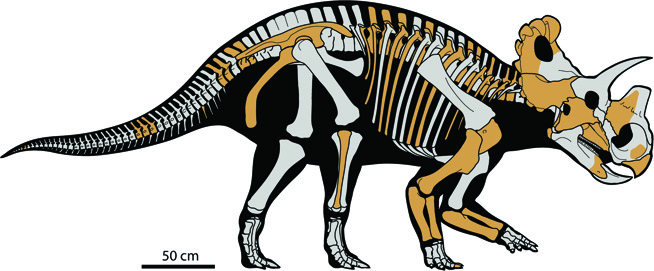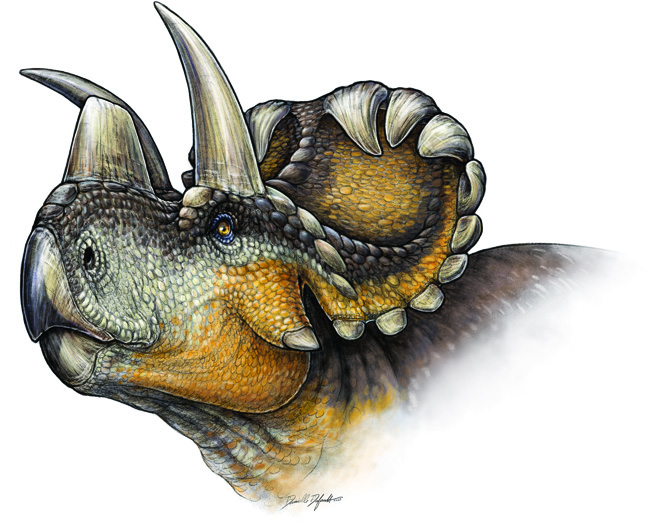ROM Research: Detailing Wendiceratops

David Evans and Michael Ryan reveal a spectacular new species of ceratopsian, Wendiceratops was approximately 6 metres from nose to tail and weighed more than a ton (2,000 lbs).
Guest blog by Shiona M. Mackenzie.
Fossils collected from a bonebed in southern Alberta during the summers of 2011 through 2014 have led David Evans, James and Louise Temerty Chair of Vertebrate Palaeontology at the ROM, and his colleague Michael Ryan, Curator of Vertebrate Palaeontology at the Cleveland Museum of Natural History, to discover a new species of horned dinosaur: Wendiceratop spinhornensis. The generic name means “Wendy’s Horned Face,” honouring fossil hunter Wendy Sloboda, who found the bonebed in 2010; “Wendy” is combined with ceratops (Greek for horned-face). The species name refers to the location of the bonebed in Pinhorn Provincial Grazing Reserve.
Over 200 bones from virtually all parts of the skeletons of four individuals have helped increase the understanding of the early evolution of horned dinosaurs. According to research by Evans and Ryan, Wendiceratops was approximately 6 metres (20 feet) long and weighed more than a ton (2,000 lbs). A herbivore, it would crop low-lying plants with a parrot-like beak and grind them up with dozens of leaf-shaped teeth.
Wendiceratops was found in the lower part of the Oldman Formation and lived in the Late Cretaceous Era, about 79 million years ago, making it one of the oldest known members of the family of rhino-like horned dinosaurs that includes the iconic Triceratops.
Describing the Head and Face

Importantly, 12 different, well-preserved skull bones were recovered, including parts of the highly adorned neck shield that projects from the back of the head. Many of the skull bones display the channels through which blood vessels would have run along the bone surface, which is typical of adult horned dinosaurs, but Wendiceratops has particularly striking head ornamentation: a series of forward-curling hook-like horns along the edge of a broad frill that projects from the back of its skull.
Although the nasal structure is not completely known, Evans and Ryan infer Wendiceratops to have a prominent, upright nasal horn located close to the eyes, which would be the oldest example of this feature in horned dinosaurs, indicating evolutionary transition between the low, rounded forms of the earliest horned dinosaurs and the large, tall horns of Styracosaurus, and its relatives in the Cretaceous Period, about 75 million years ago.
Their research also reveals that an enlarged nasal horn arose at least twice in the horned dinosaur family, once in the short-frilled group that includes Wendiceratops and again in the long-frilled group that includes Triceratops. This new information is surprising, since a pronounced nose horn has long been thought to exist in their common ancestor. In addition to inclusion in the PLOS ONE journal, the discovery also made news in several publications including Discover Magazine’s feature “Top 100 Science Stories of 2015.”
Originally published in the Spring 2016 edition of the ROM Magazine.
